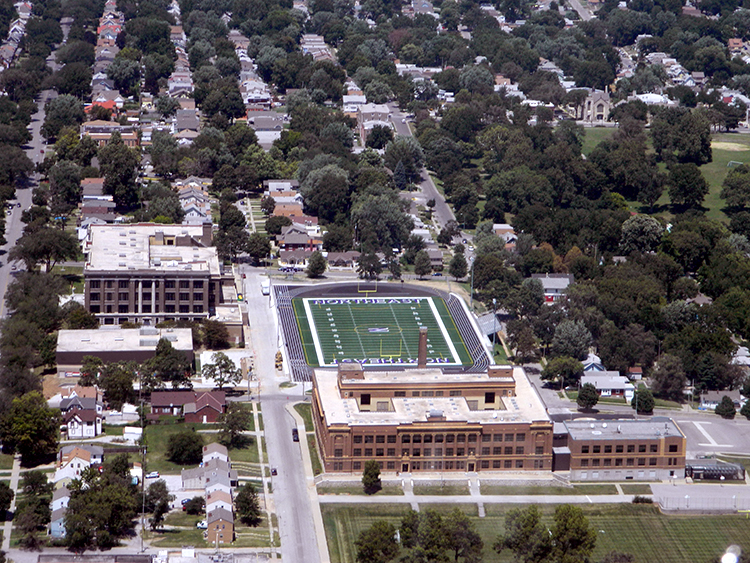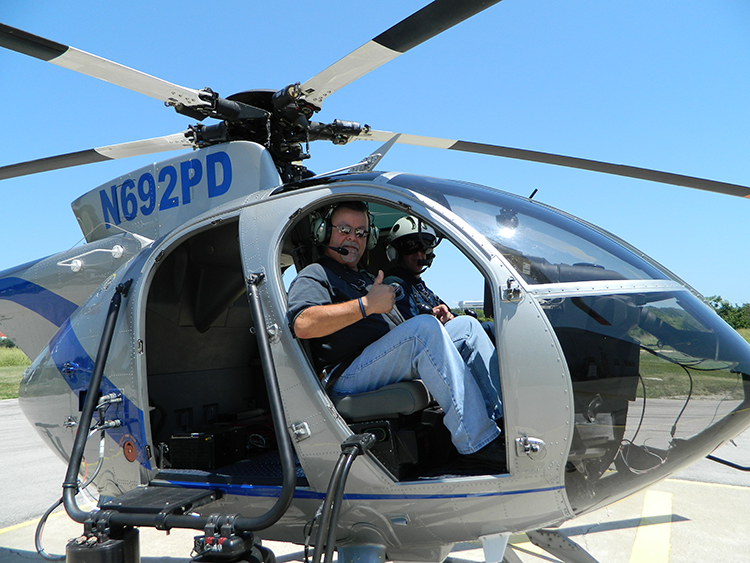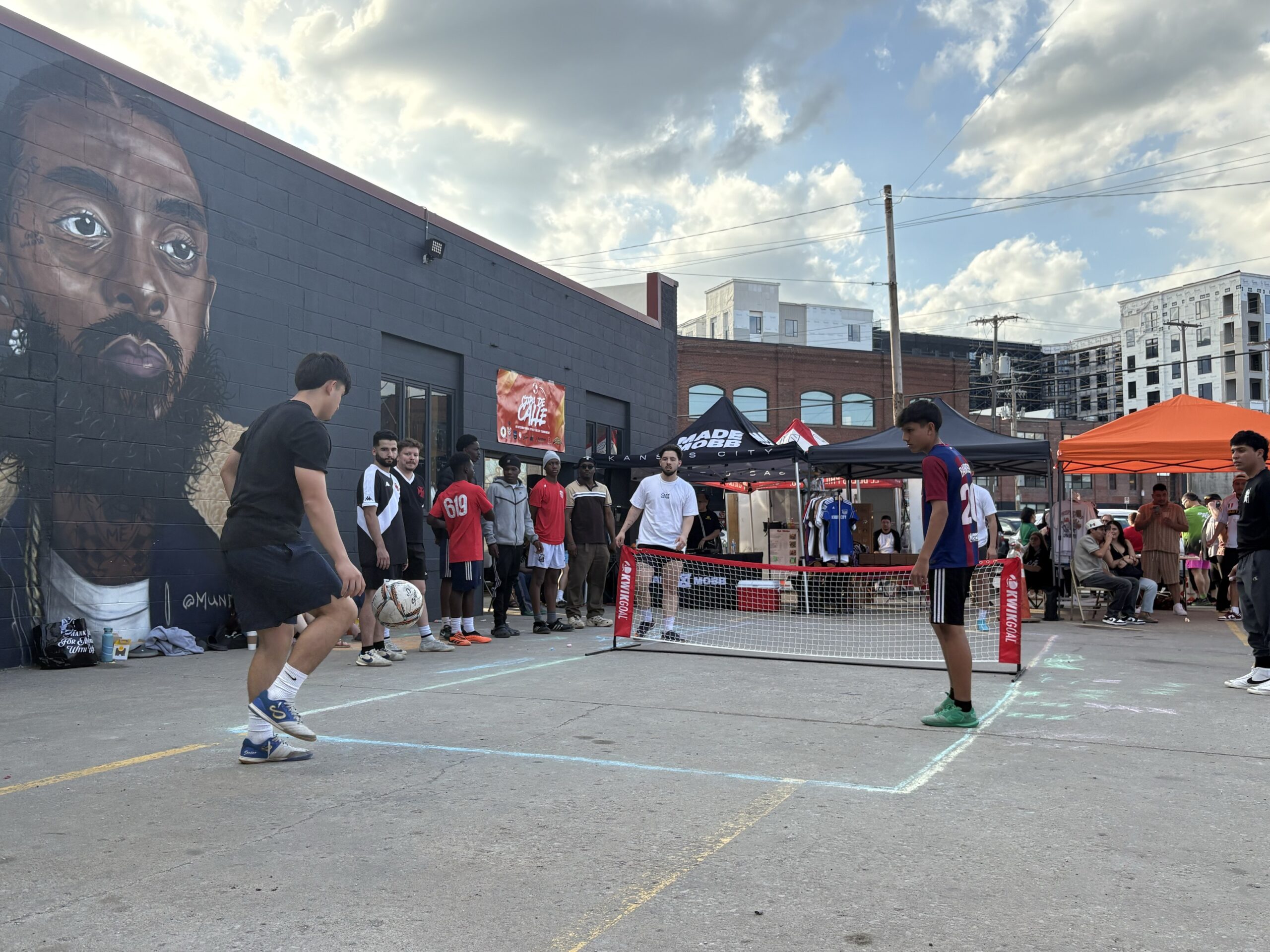By Michael Bushnell
Northeast News
Criminals who decide it’s a good idea to run from Kansas City Missouri Police Officers might not realize that the odds are stacked against them. Heavily.
More times than not, the fleeing offender is watched, tracked and caught due to the high technology tools available to officers in the city’s Helicopter Unit. The Northeast News got a rare ride along opportunity to fly with the elite unit, and on one of the hottest days of the summer, we took to the skies to see just what a day in the life is like for a Police Helicopter Pilot.
Master Patrol Officer and Certified Flight Instructor Kevin Colmar guided the Northeast News across the skies of Kansas City, from the Country Club Plaza up to the heart of East Patrol’s 310 Sector that encompasses most of the city’s Northeast area.
“If we get a call for service in one area of the city, we have the ability to be there before ground units arrive on the scene and provide critical information to district officers on how the scene is unfolding below us,” said Colmar.
Each time the Silver MD 500 helicopter takes off from the pad, a trained observer is sitting in the right-hand seat, responsible for the operation of all the technical gadgets and cameras designed specifically for high-tech police work. This leaves the pilot free to fly the helicopter and correspond with the various air traffic control centers at the downtown airport or KCI, depending on what part of the city they’re called to.
“Our job is primarily to provide air support for the officers on the ground,” Colmar said. “These new units have a ground speed of a little over 200 mph so we can get from point A to point B in a matter of minutes.”
“No traffic up here,” he added with a laugh.
Colmar then pushed the control stick forward, guiding the helicopter from just South of the Plaza to the 300 block of South Lawndale in just under 90 seconds.
None of the helicopters are equipped with doors or side windows, so pilots and observers are exposed to the elements every time they lift off. It also allows the official observer to lean out the door to gain a better ground perspective if needed.
“Nothing there to obstruct the view,” Colmar noted.
 The department’s helicopter Unit consists of nine sworn officers, three of which are certified flight instructors. Colmar, who started his career as a District Officer in East Patrol, described the extreme level of training pilots are put through prior to occupying the “left char” of one of the three $2.8 million crime fighting machine.
The department’s helicopter Unit consists of nine sworn officers, three of which are certified flight instructors. Colmar, who started his career as a District Officer in East Patrol, described the extreme level of training pilots are put through prior to occupying the “left char” of one of the three $2.8 million crime fighting machine.
“It’s a two year process that starts with standard private pilot training, then advances to commercial pilot training,” Colmar said.
After that, potential pilots are tested and given oral interviews and an even more intense flight training, including a new training module on IFR flying, otherwise known as Instrument Flight Rules.
“There’s no room for error up here and everything we do is safety driven; nothing is rushed,” Colmar said.
When Colmar was asked about the Independence Avenue helicopter landing roughly a year ago, which went viral locally thanks to a street-level video of the incident, Colmar acknowledged that it was he at the controls that night. Thankfully, he was able to walk away from the landing unscathed.
“Extremely fortunate that night,” he smiled.
Each of the three MD 500-E helicopters is equipped with close to $1 million in extra crime fighting gear, including infrared cameras, a computer-aided mapping system for fool-proof tracking, and night vision goggles just to name a few.
“It really allows for much greater safety for the District officers and the general public if a pursuit is called off,” Colmer said. “We’re able to really keep track of the individual and report to ground units where the suspect may be going, without them really knowing we’re there. It’s a huge safety boost to the public because you don’t have a car chase speeding down residential streets.”
This year the Helicopter Unit will celebrate its 50th year of service in the police department. During that 50-year period, only three officers have been killed in action, two of which went down in 1992 in a heavily wooded area just North of 23rd and Topping following an extreme mechanical failure. Considering the millions of flight hours logged by the unit, that statistic is a testament to the stringent safety standards the pilots must adhere to.
“We don’t do much ‘tree trimming,’ as you call it, anymore,” Colmar said. “There’s just way too much respect for the safety factor.”




















